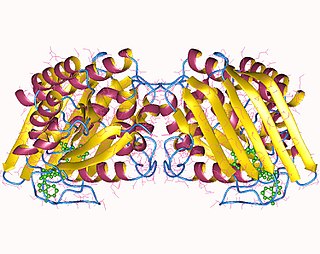
Bone morphogenetic protein 8A (BMP8A) is a protein that in humans is encoded by the BMP8A gene.

Toll-like receptor 6 is a protein that in humans is encoded by the TLR6 gene. TLR6 has also been designated as CD286.

AT-rich interactive domain-containing protein 3B is a protein that in humans is encoded by the ARID3B gene.

Olfactory receptor 56B1 is a protein that in humans is encoded by the OR56B1 gene.

High mobility group protein 20A is a protein that in humans is encoded by the HMG20A gene.

Chromosome 5 open reading frame 42 is a protein that in humans is encoded by the C5orf42 gene.

Arginine and glutamate-rich protein 1 is a protein that in humans is encoded by the ARGLU1 gene located at 13q33.3.

Basic helix-loop-helix family, member a9 is a protein in humans that is encoded by the BHLHA9 gene.

Centlein, centrosomal protein is a protein in humans that is encoded by the CNTLN gene.

Arylacetamide deacetylase-like 3 is a protein in humans that is encoded by the AADACL3 gene.

Arylacetamide deacetylase-like 4 is a protein in humans that is encoded by the AADACL4 gene.

Apolipoprotein L domain containing 1 is a protein in humans that is encoded by the APOLD1 gene. It is located on Chromosome 12.

Chromosome 9 open reading frame 16 is a protein in humans that is encoded by the C9orf16 gene.

Rho GTPase activating protein 44 is a protein in humans that is encoded by the ARHGAP44 gene.

Ataxin 7-like 2 is a protein in humans that is encoded by the ATXN7L2 gene.

Calcium/calmodulin-dependent protein kinase ID is a protein in humans that is encoded by the CAMK1D gene on chromosome 10.

Astacin-like metallo-endopeptidase is a protein that in humans is encoded by the ASTL gene.

Biliverdin reductase A is a protein that in humans is encoded by the BLVRA gene.

Cilia and flagella associated protein 53 is a protein that in humans is encoded by the CFAP53 gene.

Chromosome 16 open reading frame 62 is a protein that in humans is encoded by the C16orf62 gene.




















